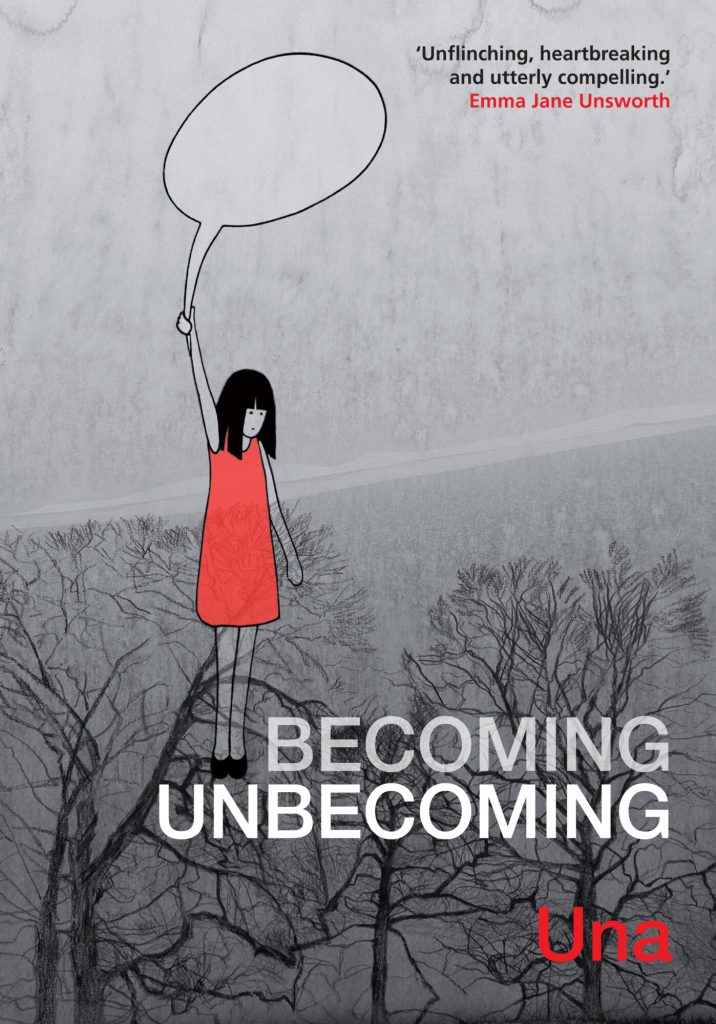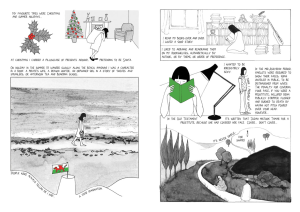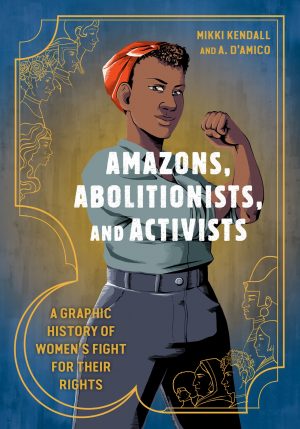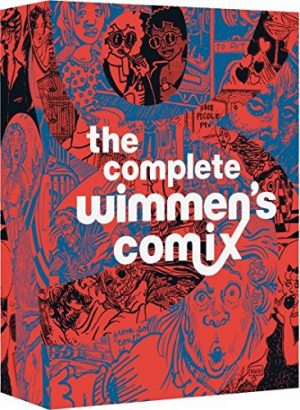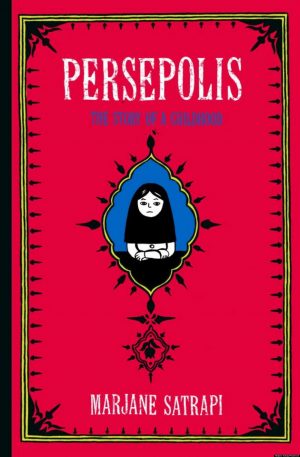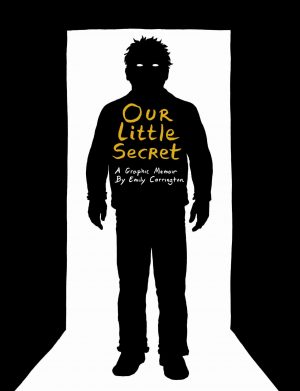Review by Graham Johnstone
Becoming Unbecoming, tells the story of a girl growing up in the orbit of 1970s serial killer the Yorkshire Ripper. ‘Becoming’ suggests a coming of age story, though that has a terrible irony here, and ‘unbecoming’ captures the judgement and battered self esteem that can result from sexual violence.
The creator’s pseudonym ‘Una’ was chosen to indicate the story of one woman representing many, and the book is dedicated “to all the others”. It’s a hugely important act to write and publish this graphic novel, but that shouldn’t overshadow the craft of its telling. Una manages to combine a ‘you-are-there’ insight into a young girl’s experience, with the analytic perspective of an adult looking back. The narration moves seamlessly between those modes, while addressing the subject on three levels: Una’s memoir, a critique of the Yorkshire Ripper investigation, and a wider socio-political consideration of sexual violence. Each would have merited a book on it’s own, but the three strands woven together are far more powerful.
What might justifiably have been a cathartic howl, is more effective for Una’s restrained language, and, at times, forensic approach. For example, she itemises the range of local ‘celebrity’ Jimmy Savile’s sexual offences by their official terms. Una is convincing on the psychology of both calculating abuser and shellshocked casualty. Even when the author is leaning into young Una’s fledgling perspective, she’s still raising powerful questions like whether the Ripper’s crimes were considered acceptable until he attacked a ‘decent’ woman. The period trappings and attitudes ring true, yet details like football crowds singing “There’s only one Yorkshire Ripper” shock anew. The account of the police investigation is fascinating, acknowledging the local force was out of its depth, yet highlighting how patriarchal attitudes led to crucial witness evidence being disregarded. Una’s personal story is equally powerful, providing perhaps the book’s single most poignant moment, observing the young Una’s own desires were never considered.
A flick through these pages may not grab readers used to ‘Ford factory’ comics with ‘airbrushed’ colouring and digital lettering. The author herself, in an illuminating afterword, talks of “learning how to make a graphic narrative by making one”. This story is powerful enough to survive weaknesses in the telling, but in practice, the author’s inexperience proves a strength. The unfussy linework, grey wash and coloured pencils suit the memoir form, giving the intimacy of a journal we have privileged access to. The author also suggests that more abstract drawings, like the Una figure in abstract landscapes, were created as explorations of the ideas rather than for a particular place in a book. The book benefits from this intuitive unpacking of feelings, memories, and reflections. Una also makes effective use of symbolic imagery, and info-graphic elements. Other memorable moments include a series of photofits from eyewitness descriptions, with (in hindsight) the face of the Ripper, “staring out so many of them.” Recreated in a spread of postage stamp-sized sketches, it’s easy to imagine that implacable face haunting his survivors, or indeed any of us.
A final significance of ‘unbecoming’ is in the adult Una growing out of the damaged child, and there’s a further positive ending in a series of images of the murdered women as they might be today.
Like the acclaimed autobiographical Maus, and Persepolis, Becoming Unbecoming sets personal against public history, and tells an important story with hard-earned insight, craft, and impressive good-humour. It’s no surprise it’s been widely praised, translated into multiple languages, and been produced for the theatre.
